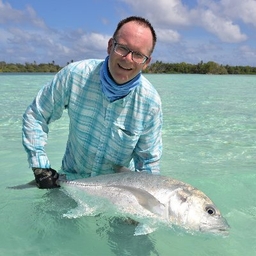
Matthew Miller
Editor at Cool Green Science
Author, Fishing Through the Apocalypse (@LyonsPress). Editor of Cool Green Science, @nature_brains. Fishing, mammals, natural history, good books, outdoor life.
Articles
-
2 months ago |
blog.nature.org | Justine E Hausheer |Matthew Miller |Natalie van Hoose
It’s a dark, rainy night in the beech forests of New Zealand. As the rain patters on the leaf litter, a slow-motion chase plays out on the forest floor. A predatory snail is on the hunt. The size of a lemon, it slides along the forest floor, leaving a glistening slime trail in its wake. It’s prey: an unsuspecting earthworm, wriggling along the snail’s path. A pause, and the snail lunches forward, grasping the worm in its mouth and slurping it down like a long, saucy strand of spaghetti.
-
Mar 19, 2025 |
blog.nature.org | Cara Byington |Matthew Miller |Justine E Hausheer
New research published in Global Food Security shows that the paths to sustainable livestock production in systems around the world require a better understanding of environmental, economic, and social and cultural factors at scales small enough to be locally relevant, but broad enough to inform effective policy and funding interventions.
-
Mar 19, 2025 |
blog.nature.org | Matthew Miller |Cara Byington |Mary Terra-Berns
We hike up the wooded trail on a warm August day, as cardinals, blue jays and other songbirds dart back and forth into the brush. Within a few minutes, we see much larger wildlife. The forest opens, revealing a large meadow–once the site of a coal minefield–and our group looks out upon it. I’m here with colleagues from The Nature Conservancy as well as biologists from the Tennessee Wildlife Resources Agency (TWRA). Earlier in the day, they had noted we’d have a high likelihood of success.
-
Mar 15, 2025 |
blog.nature.org | Cara Byington |Mary Terra-Berns |Natalie van Hoose |Matthew Miller
Next time you’re in need of an odd animal fact to fill a conversational lull, consider the nesting preferences of the Humboldt penguin. To protect their eggs and hatchlings from sun, heat and other elements, they dig nests and burrows out of the accumulated guano (poop) of generations of Humboldt penguins and other sea birds. Native to western South America, Humboldt penguins take their name from the Humboldt current that flows a few miles offshore.
-
Mar 2, 2025 |
blog.nature.org | Jenny Rogers |Emli Bendixen |Justine E Hausheer |Matthew Miller
When Rob Cunningham was growing up in Norfolk, England, he would sometimes go fishing with a friend on the banks of a river where the water was crystal clear. “I was a rubbish fisherman,” he says. “I never really caught any, but I’d see loads of trout.” The spot on the River Wensum was idyllic, he says, with strands of water-crowfoot—a kind of ranunculus—blooming on the water’s surface.
Try JournoFinder For Free
Search and contact over 1M+ journalist profiles, browse 100M+ articles, and unlock powerful PR tools.
Start Your 7-Day Free Trial →X (formerly Twitter)
- Followers
- 6K
- Tweets
- 13K
- DMs Open
- No